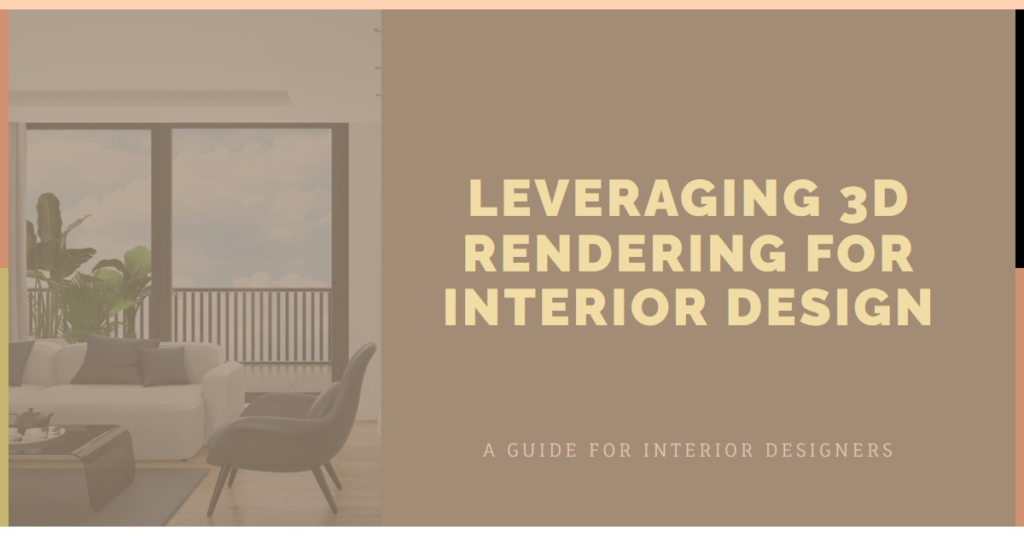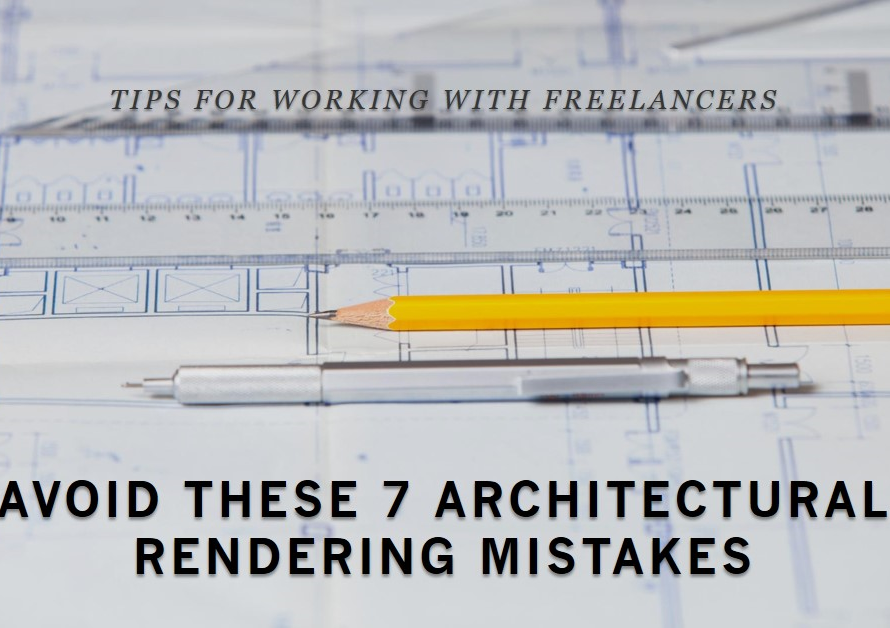
Table of Contents
In the modern era of interior design, leveraging 3D rendering technology has become a game-changer for designers looking to visualize and communicate their ideas effectively to clients, stakeholders, and collaborators. In this comprehensive guide, we’ll explore the myriad ways in which interior designers can harness the capabilities of 3D rendering to enhance design workflows, improve client experiences, and elevate the overall quality of interior design projects.
1. Embracing Visual Realism with Photorealistic Renderings
One of the primary benefits of using 3D rendering in interior design is the ability to create photorealistic visualizations that accurately depict design concepts, materials, lighting, and spatial arrangements. By harnessing advanced rendering software and techniques, interior designers can generate lifelike images that closely resemble the final design outcomes, providing clients with a clear and immersive preview of their envisioned spaces. Photorealistic renderings not only showcase design details with precision but also instill confidence and trust in clients by offering realistic representations of their design aspirations.
2. Enhancing Design Iterations and Flexibility
3D rendering empowers interior designers with unparalleled flexibility and agility in exploring design iterations, variations, and alternatives throughout the creative process. Designers can experiment with different color schemes, furniture layouts, material finishes, and architectural elements in virtual 3D environments, allowing for quick revisions, adjustments, and client feedback incorporation. This iterative approach fosters creativity, innovation, and design refinement, ensuring that the final design aligns perfectly with client preferences, functional requirements, and aesthetic visions.
3. Immersive Visualization through 3D Virtual Tours
Incorporating 3D rendering into interior design projects enables designers to create immersive virtual tours and walkthroughs that transport clients into digitally recreated spaces with unprecedented realism and detail. Utilizing VR (Virtual Reality) technology or interactive 3D models, designers can offer clients immersive experiences where they can navigate and explore every corner of their designed interiors, experiencing lighting effects, spatial proportions, and material textures in a dynamic and interactive manner. Virtual tours enhance client engagement, decision-making processes, and design comprehension, fostering deeper connections and satisfaction with design proposals.
4. Streamlining Communication and Collaboration
Effective communication and collaboration are paramount in successful interior design projects, and 3D rendering tools play a crucial role in facilitating clear visual communication among design teams, clients, contractors, and stakeholders. Presenting 3D renderings, animations, or fly-through videos during client meetings, presentations, or design reviews helps convey design intent, concepts, and details comprehensively, minimizing misinterpretations and enhancing stakeholder buy-in. Collaborative platforms and cloud-based rendering services further streamline sharing, feedback incorporation, and project collaboration among dispersed teams or remote stakeholders, fostering seamless workflows and project efficiency.
5. Navigating Material Selections and Design Decisions
3D rendering technology empowers interior designers to navigate material selections, design decisions, and aesthetic choices with precision and confidence. By digitally simulating various materials, textures, finishes, and lighting scenarios in 3D environments, designers can assess visual impacts, color harmonies, and material contrasts before actual implementation, reducing risks of costly mistakes or design revisions during construction phases. Clients benefit from realistic material visualizations that aid in informed decision-making, ensuring cohesive design palettes and desired ambiance in their spaces.
6. Showcasing Design Concepts in Marketing and Presentations
For interior designers, 3D rendering serves as a powerful marketing and presentation tool to showcase design concepts, portfolio projects, and design capabilities in compelling visual narratives. High-quality renderings, mood boards, and animated presentations create impactful marketing collateral for websites, social media platforms, design proposals, and client pitches, capturing attention, inspiring engagement, and showcasing design prowess to prospective clients, collaborators, and industry peers. Leveraging 3D visualization in marketing efforts enhances brand visibility, differentiation, and client attraction in the competitive interior design landscape.
7. Addressing Client Expectations and Design Visualization Challenges
Meeting and exceeding client expectations can be challenging in interior design projects, especially when translating abstract concepts and ideas into tangible design visuals. 3D rendering bridges this gap by providing clients with realistic, detailed, and visually engaging representations of proposed designs, layouts, and spatial configurations. Designers can address client concerns, clarify design intentions, and validate design decisions through collaborative visualization experiences enabled by 3D rendering technologies, fostering trust, satisfaction, and successful project outcomes.
8. Optimizing Time and Cost Efficiencies in Design Processes
Efficiency and productivity are paramount in interior design workflows, and 3D rendering contributes significantly to time and cost optimizations throughout the design process. Designers can streamline design iterations, client revisions, and design documentation by working within digital 3D environments, reducing the need for physical mock-ups, rework, and material wastage. Time-saving benefits extend to faster design approvals, smoother project timelines, and improved coordination with contractors and suppliers, resulting in overall cost efficiencies and project profitability.
9. Integrating Sustainable Design Practices and Visualizations
Sustainable design principles and environmental considerations are integral to modern interior design practices, and 3D rendering enables designers to integrate and visualize sustainable design strategies effectively. By simulating energy-efficient lighting schemes, sustainable material choices, passive design features, and green technologies in 3D renderings, designers can showcase eco-friendly design solutions to clients, promoting sustainability awareness, and encouraging environmentally conscious design decisions that align with clients’ values and sustainability goals.
10. Continuing Education and Mastery of 3D Rendering Tools


As technology advances and rendering software evolves, interior designers can leverage continuous education, training, and mastery of 3D rendering tools to stay at the forefront of design innovation and visualization capabilities. Participate in workshops, online courses, and industry conferences focused on 3D rendering, VR technologies, and visualization trends to enhance skills, explore advanced rendering techniques, and unlock new creative possibilities in interior design projects. Embrace a mindset of lifelong learning and experimentation with rendering tools to expand design capabilities, deliver exceptional design experiences, and differentiate your design practice in the competitive design landscape.
In conclusion, interior designers can unlock immense value and creativity by leveraging 3D rendering technologies across various stages of design processes, client interactions, and project executions. From enhancing visual realism and design iterations to streamlining communication and embracing sustainable design practices, 3D rendering empowers designers to visualize, communicate, and realize design visions with precision, impact, and efficiency, ultimately elevating the quality of interior design experiences and outcomes for clients and stakeholders alike.


